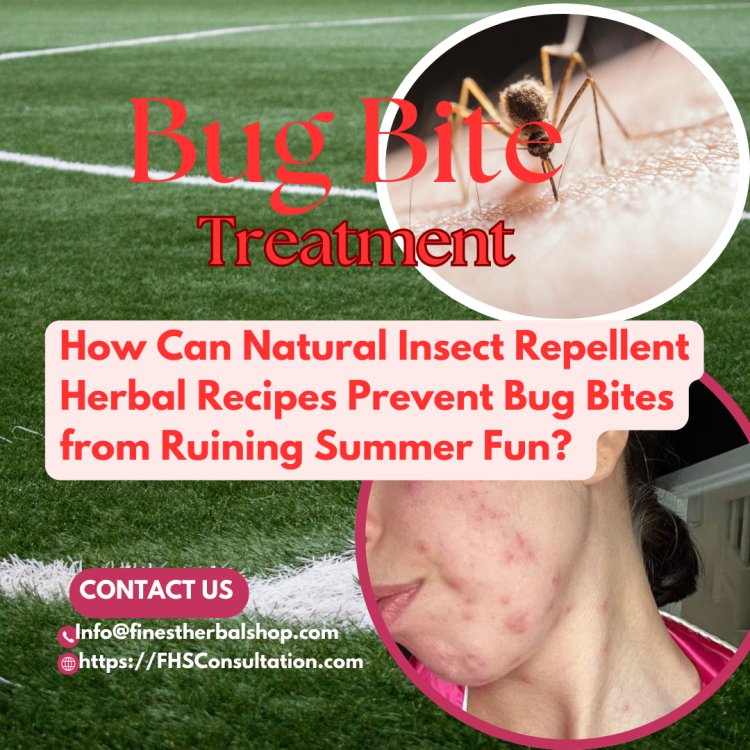How Can Natural Insect Repellent Herbal Recipes Prevent Bug Bites from Ruining Summer Fun?
Are you concerned about insect bites? Here are four recipes for natural bug repellents—utilizing witch hazel and other pantry staples. All effectively repel mosquitos, flies, and other insects that “bug” you—without chemicals being absorbed into your skin!

How Can Natural Insect Repellent Herbal Recipes Prevent Bug Bites from Ruining Summer Fun?
Are you concerned about insect bites? Here are four recipes for natural bug repellents—utilizing witch hazel and other pantry staples. All effectively repel mosquitos, flies, and other insects that “bug” you—without chemicals being absorbed into your skin!
What Insects Are Causing You Concern?
Humans tend to attract insects upon exiting indoor environments. Insects utilize diverse methods to locate their targets, including exploiting carbon dioxide emissions, detecting scents, sensing body heat, vibrations, and reacting to specific colors. Deerflies, for instance, are attracted to CO2, warmth, motion, and dark colors. To reduce one's attractiveness to insects, avoiding fragrant soaps, lotions, perfume, hairspray, or aftershave is recommended. Employing scents that block insect receptors can render an individual more difficult to locate.
- Studies have shown that citronella, lemon eucalyptus, basil, and garlic exhibit mosquito-repelling properties. * Ants and flies also exhibit a dislike for mint, basil, and bay. * Citronella, lemongrass, and rose geranium have been found to effectively repel tiny gnats, including No-See-Ums. * Furthermore, lemon eucalyptus and geranium are known to repel ticks and lice.
How To Design a Universal Insect Repellent Solution
Considering that different fragrances repel different insects, you can target specific ones or use a combination of oils to make an all-purpose repellent.
Here are four simple homemade bug sprays you can make using essential oils, customized to your scent preference:
1. Combine 2 cups witch hazel, ½ tsp. lemongrass or citronella essential oil, and 1 tbsp apple cider vinegar.
- . Mix 1 cup isopropyl alcohol, 1 cup water, and ½ tsp. catnip essential oil.
- Blend 1 cup alcohol or witch hazel with 10-20 drops of essential oils like lemongrass, peppermint, or lemon eucalyptus.
- . Combine 1 qt. vinegar, ½ tsp. pennyroyal essential oil, 1 tsp. lemon eucalyptus essential oil, and 1 tsp.
- Combine 2 cups witch hazel, ½ tsp. lemongrass or citronella oil, and 1 tbsp apple cider vinegar.
Botanical Bug Spray
No essential oils available? Utilize dried or fresh herbs as an alternative. If you can prepare tea, you can create these concoctions. Store them in the fridge for a refreshing spray.
Here are two herbal recipes:
1. Create a herbal infusion by steeping 2 tablespoons each of chopped fresh mint, basil, and lavender leaves in 1 cup boiling water until cooled. Strain the infusion, add 1 cup witch hazel, and shake.
2. Boil 1 cup water with a few cloves and 3-4 tablespoons dried herbs, including peppermint, catnip, and lavender. Then, mix the ingredients, cover, cool, strain, and add 1 cup witch hazel or isopropyl alcohol.
Precautions Regarding Homemade Sprays
- It is crucial to acknowledge that some herbs and oils can be hazardous or irritating. Lemon eucalyptus should not be used on children under the age of 3 or on pregnant or nursing mothers. * Pregnant women should also avoid pennyroyal.
- The use of certain essential oils, including citronella, can be detrimental to pets, particularly when concentrated; a veterinarian should be consulted prior to using these or natural insect repellents on or near your pet.
- Perform an allergy test on homemade bug sprays before applying them liberally to ensure safety. * Vinegar-based sprays may cause temporary stinging and a strong pickle-like odor until they dry completely. * Certain oils may cause discoloration on clothing.
Please Identify your mixture with its ingredients and store it in a dark-colored container, or place it in a dark location to maximize its potency.
Here are three supplementary recipes for bug repellent.
Let's formulate a quick herbal bug repellent that's clean, effective, and gentle on the skin.
The adult formula features a ~0.65% dilution, suitable for daily use during the summer months:
Adult Bug Repellent Spray (12 oz)
Formulation:
6 oz distilled water
6 oz witch hazel
10 drops lemongrass essential oil
10 drops peppermint essential oil
10 drops citronella essential oil. Instructions: Shake before each use. Storage: Glass containers in a cool, dark place. Shelf life: 2-3 weeks (or refrigerate up to 1 month).
Looking for a safer alternative for children? Child-Friendly Modification (ages 2-10)Formulation:
6 oz distilled water
6 oz witch hazel
3 drops lemongrass essential oil
3 drops citronella essential oil Optional: 1-2 drops lavender Precautions:
Always patch test. Do not apply to face or hands. Stability: 2-3 weeks.
Infant Formula Blend (6+ months)
Mix 6 oz of distilled water with 6 oz of chamomile hydrosol or witch hazel and incorporate 1-2 drops TOTAL essential oil lavender + citronella only
This product is designed for application to clothing and stroller fabric only, with no direct spray contact on skin. Age restriction applies: six months and above.
For a more comprehensive understanding of bug bites and related issues, please contact Dr. Anthia Wint at FHS Consultation.












